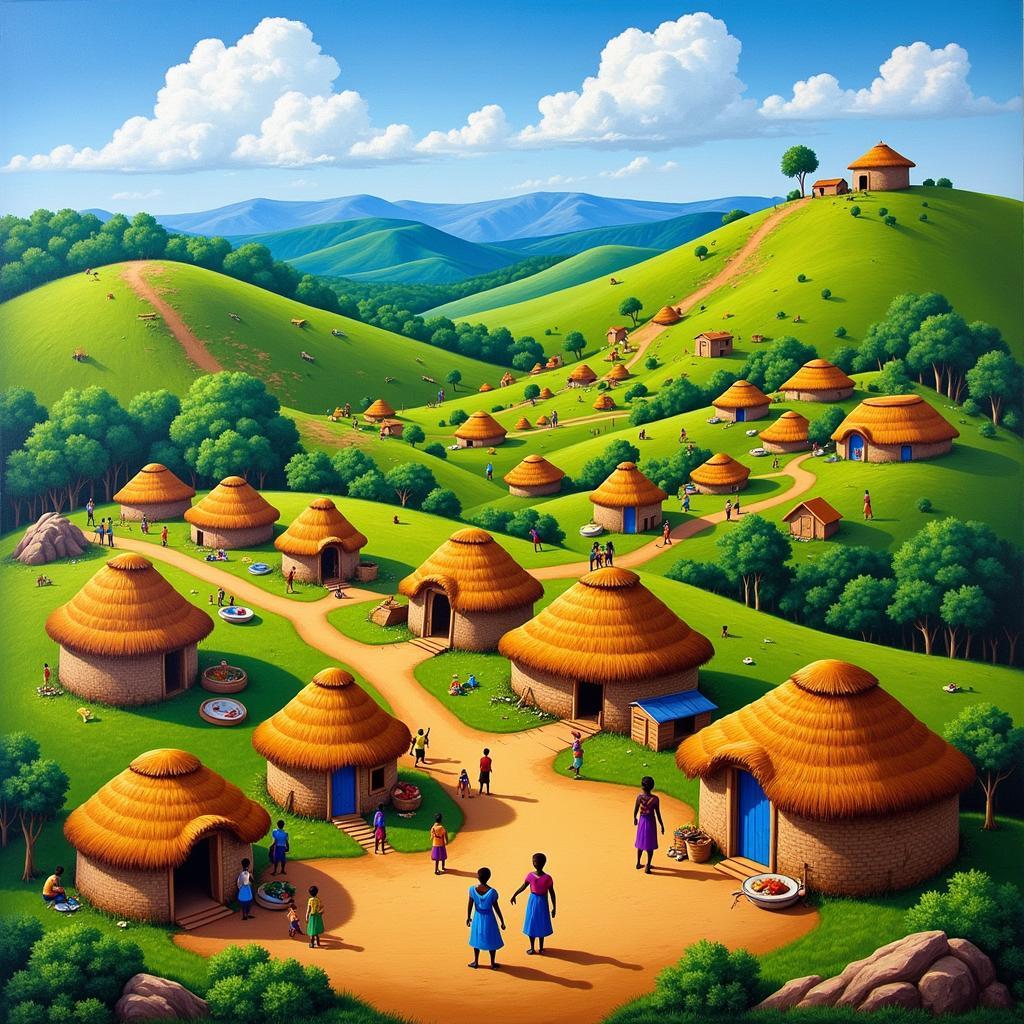Discovering the Magic of African Earth Masks
African Earth Masks, imbued with rich symbolism and artistry, offer a captivating glimpse into the diverse cultures of the African continent. From ceremonial rituals to artistic expression, these masks hold a profound significance, reflecting the spiritual beliefs, social structures, and artistic traditions of various African communities. This exploration delves into the fascinating world of African earth masks, uncovering their history, creation process, and enduring legacy.
Unmasking the History of African Earth Masks
African earth masks have a long and storied history, dating back centuries. They are not mere decorative objects but rather powerful symbols deeply intertwined with the spiritual and social fabric of African societies. These masks play a crucial role in ceremonies, rituals, festivals, and theatrical performances, serving as conduits between the physical and spiritual realms. One example is their use in initiation rites, marking the transition from childhood to adulthood. After this initial introduction, let’s delve deeper into the unique aspects of these masks. You might also be interested in learning more about African inspired home decor.
Different regions across Africa have developed unique mask-making traditions, resulting in a vast array of styles, materials, and symbolic meanings. From the intricate wooden masks of the Yoruba people of Nigeria to the clay masks of the Baule people of Côte d’Ivoire, each mask tells a unique story. The materials used in their creation often carry symbolic weight – wood might represent strength and longevity, while clay might symbolize connection to the earth. Exploring African art symbols provides further insight into the rich tapestry of meanings woven into these objects.
The Art of Crafting African Earth Masks
The creation of African earth masks is a meticulous process, often passed down through generations of skilled artisans. The process often begins with the selection of suitable materials, typically clay or wood. If using clay, it’s carefully prepared, mixed with water and other natural elements to achieve the desired consistency. The artist then sculpts the mask, adding intricate details and features that reflect the specific cultural traditions and spiritual beliefs of their community.
After the initial shaping, the mask is left to dry and harden. Once dry, it may be further decorated with pigments derived from natural sources, such as plants and minerals. These pigments add vibrant colors and patterns to the mask, further enhancing its symbolic significance. This detailed craftsmanship transforms the mask from a simple object into a powerful work of art. For a different perspective on African artistry, consider exploring African family art.
African Earth Masks: More Than Meets the Eye
African earth masks are more than just beautiful objects; they embody the cultural and spiritual values of the communities that create them. They are often used in rituals and ceremonies to represent deities, ancestors, or spirits. In some cultures, masks are believed to possess transformative powers, allowing the wearer to embody the spirit or entity represented by the mask. This connection to the spiritual world imbues the masks with a deep sense of power and significance.
Preserving the Legacy of African Earth Masks
Today, African earth masks continue to fascinate and inspire, attracting collectors, art enthusiasts, and scholars from around the world. Museums and galleries showcase these incredible works of art, preserving their legacy for future generations. Efforts are also underway to support contemporary African artists who continue to create masks, ensuring that these ancient traditions remain vibrant and alive. The masks are a testament to the creativity, skill, and spiritual depth of African cultures. Have you ever considered incorporating African elements into your event decor? Check out some inspiring ideas for African event decor.
Conclusion
African earth masks offer a powerful window into the rich and diverse cultures of Africa. From their ceremonial use to their artistic significance, these masks represent a vital connection to the past, present, and future. By understanding the history, craftsmanship, and symbolism behind these masks, we gain a deeper appreciation for the cultural heritage of Africa and the enduring power of art. Let’s continue to celebrate and preserve the magic of African earth masks. Perhaps you’d like to explore the world of African B284BE colour wall background to further immerse yourself in African aesthetics.
FAQ
- What are African earth masks made of? They are typically made from clay or wood.
- What is the significance of African earth masks? They hold deep cultural and spiritual significance, often representing deities, ancestors, or spirits.
- How are African earth masks used? They are often used in rituals, ceremonies, and theatrical performances.
- Where can I see African earth masks? Museums, galleries, and private collections around the world showcase these works of art.
- Are African earth masks still made today? Yes, contemporary African artists continue to create masks, preserving these ancient traditions.
- What are some common motifs found on African earth masks? Common motifs include animals, human faces, and geometric patterns.
- How can I learn more about African earth masks? Research online, visit museums, and explore books and articles on African art and culture.
Other Questions You Might Have
- How do African earth masks differ between different regions and tribes?
- What is the role of color and pattern in African earth mask symbolism?
- How are African earth masks collected and preserved?
For further exploration, consider reading articles on related topics such as African art symbols.
Need Help?
Contact us for any assistance. Call: +255768904061, Email: kaka.mag@gmail.com or visit us at Mbarali DC Mawindi, Kangaga, Tanzania. We have a 24/7 customer service team.

